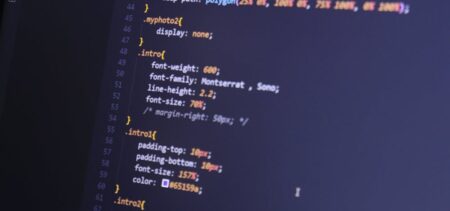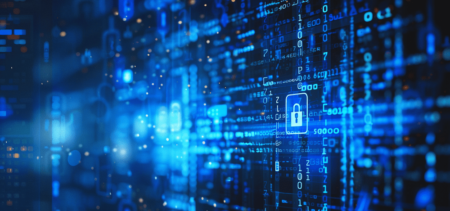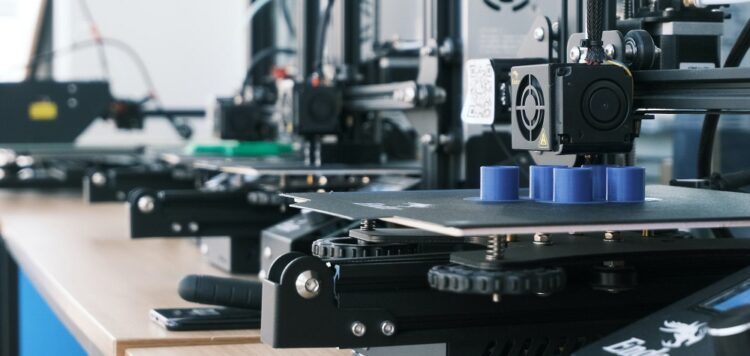The Fourth Industrial Revolution, commonly known as Industry 4.0, is a transformative paradigm shift that is revolutionizing the manufacturing landscape. This era of interconnectedness and automation is characterized by the convergence of physical systems, the Internet of Things (IoT), and advanced technologies like artificial intelligence (AI) and cyber-physical systems (CPS). While Industry 4.0 promises to enhance efficiency, productivity, and innovation, it also brings with it many security challenges that demand attention and proactive measures.
To address effectively the security challenges posed by Industry 4.0, it is crucial to delve into the intricacies of this interconnected ecosystem. The sheer volume of connected devices and the vast amount of data generated in real-time create a complex and ever-evolving threat landscape.
Statistics: Quantifying the Security Challenges
The growing complexity and interconnectedness of Industry 4.0 systems have significantly amplified the security risks. A report by Accenture revealed that 72% of industrial organizations have experienced at least one security breach in the past year. The average cost of a data breach in the manufacturing sector is estimated to be $4.3 million, with a recovery time of over 230 days.
A recent Kaspersky security report has revealed a concerning rise in cybercrime targeting industrial organizations worldwide. The report, covering the period from January to September 2023, documented 67 cybercrime cases against industrial organizations, a stark increase from the 40 cases reported in the previous half-year. This trend highlights the growing sophistication and frequency of cyberattacks against industrial systems, posing a significant threat to critical infrastructure and manufacturing operations.
“Among all organizations that suffered attacks, the vast majority relate to industrial manufacturing, which is the most numerous and diverse category of potential victims among industrial organizations. They also have many secrets that potential buyers are willing to pay for, while being less regulated (in the sense of not being able to pay a ransom), and not as zealously protected by the state as, for example, the energy sector (which means less criminal liability for attackers)”, Kaspersky analysts say.
Addressing the Security Challenges: A Multifaceted Approach
The security challenges posed by Industry 4.0 demand a multifaceted approach that encompasses both technical and organizational measures.
Technical Measures
Secure network architecture
These protective measures include robust firewalls that filter and restrict unauthorized traffic, intrusion detection systems that proactively monitor network activity for anomalies, and intrusion prevention systems that actively block malicious activity. This multilayered defense approach creates a resilient network that effectively deflects cyberattacks and safeguards sensitive data.
Vulnerability management
This ongoing process involves regular vulnerability scans and assessments, enabling organizations to identify and prioritize vulnerabilities in software, operating systems, and critical industrial control systems (ICS). Prompt remediation of identified vulnerabilities is paramount to minimize the risk of exploitation by cybercriminals and safeguard critical operations.
Segmentation and isolation
This approach involves dividing the network into distinct segments, separating critical systems and sensitive data from less protected areas. This compartmentalization limits the impact of a security breach to a specific segment, preventing malicious actors from traversing the entire network and compromising more critical assets.
Data encryption
Data encryption entails transforming sensitive information into an unreadable format, ensuring that it can only be accessed authorized parties in possession of the decryption key. This encryption process should occur both during data transmission (in transit) and when data is stored at rest. By encrypting sensitive data, organizations create a formidable barrier that thwarts the cybercriminals’ attempts to steal or tamper with valuable information.
Malware protection
These solutions are designed to detect, quarantine, and neutralize malware threats that attempt to infiltrate endpoints, such as laptops, desktops, and mobile devices. Advanced endpoint security solutions leverage machine learning and artificial intelligence to analyze device behavior and identify anomalies that may indicate malware infections. By deploying endpoint security solutions, organizations create multilayered defenses that safeguard their digital assets from malicious attacks.
Log management and analysis
Industrial organizations must establish comprehensive log management and analysis solutions. These tools collect, store, and analyze logs generated by various IT systems, providing a valuable window into network activity and potential security breaches. By analyzing these logs, organizations can identify suspicious patterns, anomalies, and unauthorized access attempts, enabling them to detect proactively and respond to security incidents before they cause significant damage.
Organizational Measures
Cybersecurity awareness training
To cultivate a security-conscious workforce and equip employees with the knowledge to navigate the increasingly sophisticated cyber landscape, organizations must prioritize regular cybersecurity awareness training. This ongoing educational program should encompass a comprehensive understanding of phishing scams, social engineering tactics employed by cybercriminals to exploit human vulnerabilities, and essential data security best practices, including password hygiene, secure file handling, and recognizing suspicious activity.
Developing incident response plans
These meticulously crafted plans should outline clear and actionable steps to be taken in the event of a security incident, encompassing incident identification, containment, eradication, recovery, and post-incident analysis. Regular testing ensures that incident response teams are prepared to navigate the complexities of a security breach swiftly and effectively, minimizing the impact on operations and safeguarding critical data.
Implementing access control policies
Organizations must implement robust access control policies that adhere to the principle of “least privilege.” These policies should strictly limit access to sensitive information and resources based on user roles and permissions, ensuring that only authorized personnel with a legitimate need to access certain data can do so. This granular control approach minimizes the risk of unauthorized access and potential data breaches.
Regular risk assessments
In a proactive approach to cybersecurity, organizations must engage in a recurring cycle of risk assessments, meticulously evaluating their IT infrastructure and operations to identify and prioritize potential security threats and vulnerabilities. This vigilant assessment process serves as a crucial foundation for establishing effective mitigation strategies and ensuring that critical assets are safeguarded against evolving cyber threats.
Establishing a security culture
This entails embedding a deep-seated appreciation for cybersecurity principles and best practices into the organization’s DNA, ensuring that cybersecurity is not an afterthought, but rather an integral part of the entire business process. This cultural transformation requires ongoing communication, training, and reinforcement of cybersecurity awareness, encouraging employees to play an active role in safeguarding the organization’s digital assets and report promptly any suspicious activity.
In Conclusion
The Fourth Industrial Revolution, aptly named Industry 4.0, has revolutionized the manufacturing landscape, ushering in an era of unprecedented interconnectedness and automation. This paradigm shift has blurred the lines between the physical and digital worlds, seamlessly integrating advanced technologies like the Internet of Things (IoT), artificial intelligence (AI), and cyber-physical systems (CPS) into the manufacturing process.
While Industry 4.0 holds immense promise for enhancing efficiency, productivity, and innovation, it also presents a myriad of security challenges that demand unwavering vigilance and proactive measures. The interconnectedness that underpins Industry 4.0, a hallmark of this technological revolution, also serves as a conduit for cyberthreats, amplifying the risk of security breaches and disrupting operations.
























































